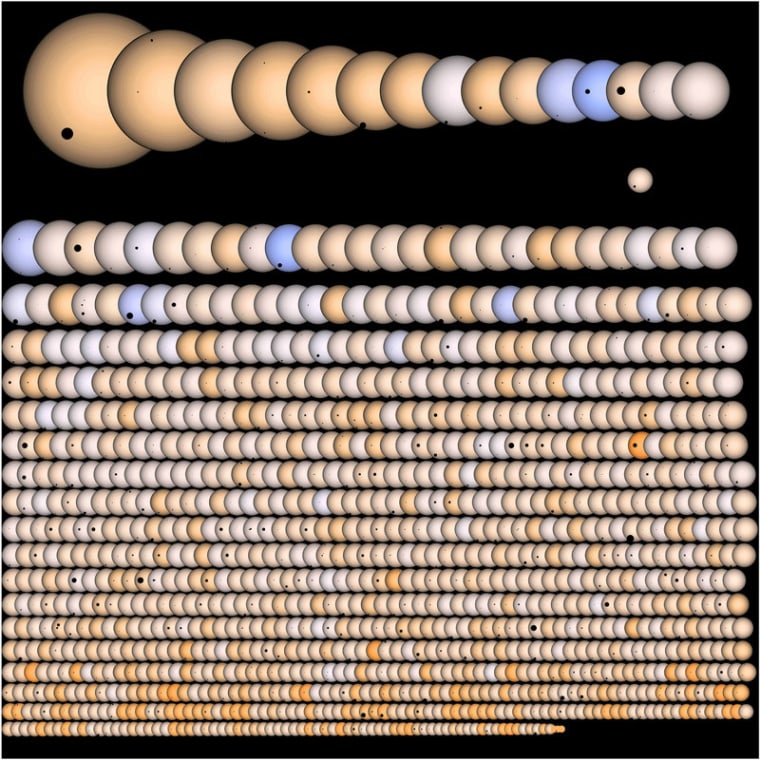Last month, NASA's Kepler Mission announced a massive data release of 1,235 candidate planets discovered in the first four months of the spacecraft's observations.
Today's Astronomy Picture of the Day (APOD) is a wonderful illustration of these 1000+ candidates put together by Jason Rowe, a Kepler post-doc. Each orb is a host star in our galaxy with its candidate planet(s) shown in silhouette, transiting in front of the star as seen from Earth orbit. For scale, the sun is shown by itself in the upper right, with Jupiter and Earth in transit. Every tiny black spot you see is a potential planet crossing in front of its star and in the process blocking a fraction of the light from the star, enabling Kepler's instruments to detect it. The colors of the stars have been adjusted to represent how they would appear to the naked eye from outside of Earth's atmosphere.
If you really want to have some fun, check out the high-res version.
For more on how Kepler detects planets, watch my very first whiteboard video, explore the mission home page, and follow the mission on Twitter @NASAKepler.
Summer Ash is our in-house astrophysicist. She blogs at Newtonianism for the Ladies.
